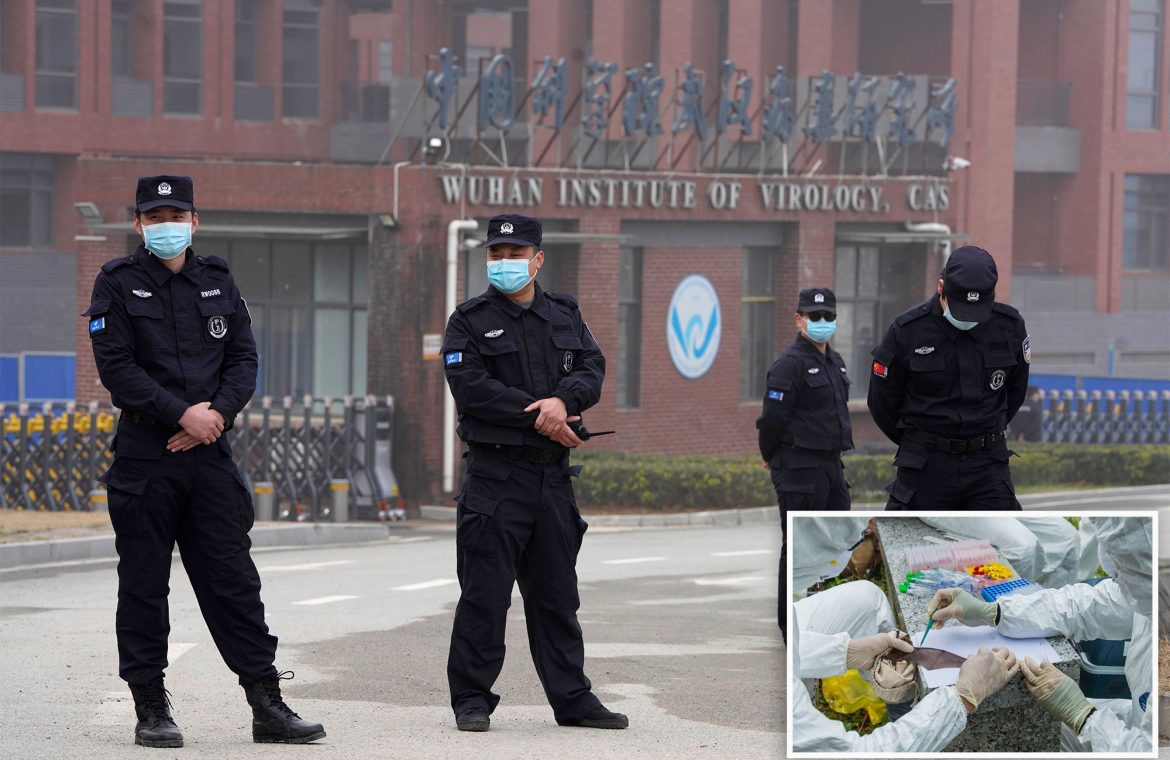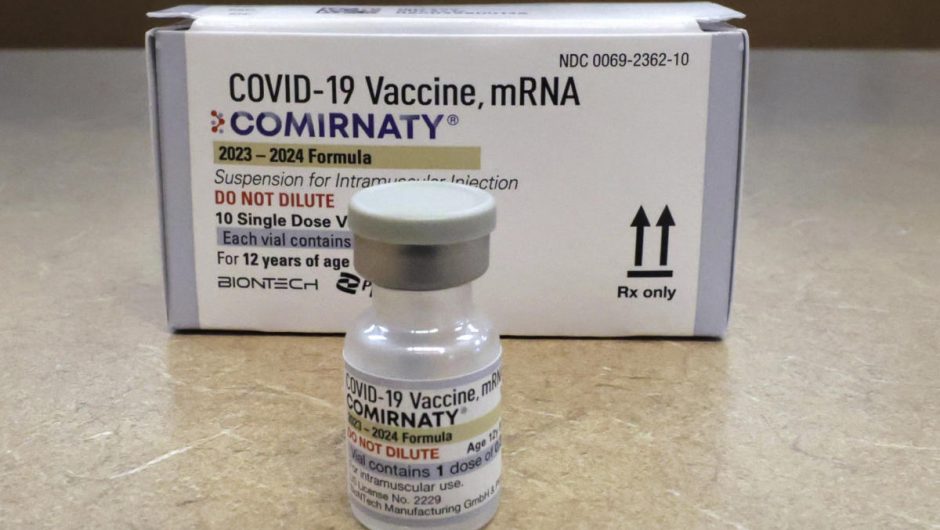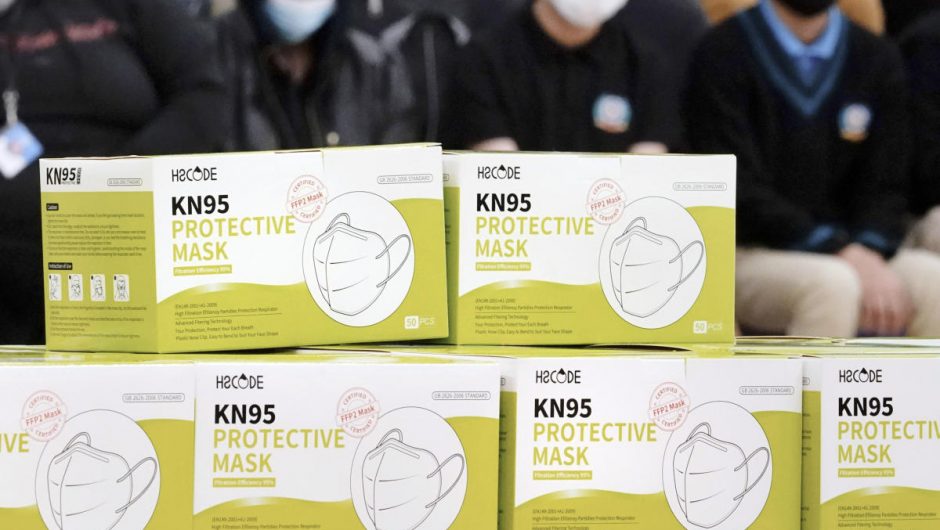[ad_1]
Newly released investigative reports from both ProPublica and a Senate committee have drawn the same conclusion over the origins of COVID-19 — that it likely came from a Chinese lab.
The bombshell Friday report from ProPublica, done in collaboration with Vanity Fair, examined and supported findings of the interim report released Thursday by Republicans on the Senate Health, Education, Labor, and Pensions Committee that concluded “the COVID-19 pandemic was, more likely than not, the result of a research-related incident.”
The ProPublica/Vanity Fair investigative piece also shared shocking new details behind the suspicious Wuhan, China lab believed to be ground zero for the deadly virus — including inhumane and unsafe working conditions and rushed deadlines shortly before the first case of COVID-19 was confirmed in the country.
The Wuhan Institute of Virology [WIV], a state-run and funded research facility home to China’s riskiest coronavirus research, had been under immense pressure by the ruling Chinese Communist Party [CCP] to produce scientific breakthroughs to raise China’s global status despite lacking resources, the ProPublica/Vanity Fair report said.
An investigative panel, commissioned by the Senate, revealed there may have been a safety emergency inside the lab in November 2019, weeks before the first confirmed COVID-19 infection.ECOHEALTH ALLIANCE
Even after millions across the globe died of COVID-19 in the worst global pandemic in a century, the origins of the virus remained unclear. Many speculated it came from a wet market in Wuhan while others pointed fingers at the WIV — where scientists mixed strains of different coronaviruses to create new viruses to predict the risk of human infection and create new vaccines.
Toy Reid, a career specialist for the RAND Corporation and former political officer in East Asia for the US State Department, was a member of the nine-person investigative team tasked with finding the cause of the virus, commissioned by Sen. Richard Burr (R-N.C.), according to the ProPublica/Vanity Fair report.
For 15 months, Reid used his skill translating CCP “party speak,” — a veiled language used by party officials when talking about something potentially embarrassing — while reviewing troves of archives on the WIV’s website, according to the report.
CCP dispatches reviewed by Reid reportedly signaled that the institute faced a serious safety emergency in November 2019 — weeks before China officially confirmed that people had been infected by the virus. The emergency, while not detailed, was serious enough that party officials weighed in and swift action was taken to address safety issues, documents showed.
“These viruses come without a shadow and leave without a trace,” the party dispatch said.
Reid concluded from his review of the dispatch that “They are almost saying they know Beijing is about to come down and scream at them.”
The Wuhan lab was reportedly lacking resources and under pressure from the CCP before the outbreak, according to Friday’s report.AFP via Getty Images
That same fall, several scientists inside the WIV became sick “with symptoms consistent with both COVID-19 and common seasonal illnesses,” according to declassified intelligence in a U.S. State Department fact sheet.
In September 2019, CCP conducted a political inspection of the 37 state organizations, including WIV’s parent organization – the Chinese Academy of Sciences – to find any “violations of political discipline, party organizational discipline, [financial] ethics discipline, discipline with regard to the masses, work discipline, and discipline in one’s personal life.”
CAS was cited for over a dozen “principal problems.” Just a week earlier on Sept. 3, over 50 managers and staffers at WIV met to discuss an upcoming internal audit to determine political loyalty, according to a party dispatch.
“That’s when you start to see emergency response activity,” Larry Kerr, the former director of the HHS pandemic office told Vanity Fair.
Within 24 hours of the CAS inspection on Sept. 12, the WIV suddenly took down its Wildlife-Borne Viral Pathogen Database, which was previously public and contained disease samples from over 15,000 bats, according to the report.
The Vanity Fair and ProPublica review also shed light on a possible attempt to cover up the Nov. 2019 incident.
On Nov. 11, the WIV appeared to republish the entire section of its website containing institutional and party branch news, according to the report. All archived dispatches contained data showing that they were changed that day.
WIV officials appear to have taken down or edited documents in an effort to cover their tracks before CAS biosecurity officials visited the lab ahead of Nov. 19 after the incident.
The Senate report released Thursday, detailed coverup efforts inside the WIV days before an inspection was scheduled to take place.Future Publishing via Getty Imag
The first dispatch posted after Nov. 11 describes how staffers had rushed to respond every time there had been a biocontainment issue. According to the report, the dispatch was dated Nov. 12 but was actually uploaded on Nov. 19, when officials arrived.
Ji Changzheng, a CAS biosecurity official, visited the lab on Nov. 19, according to a dispatch posted on WIV’s website on Nov. 21. According to Reid, the meeting appears to have been “out of the ordinary and event driven.”
In his opening remarks, Ji described “many large-scale cases of domestic and foreign safety incidents in recent years, and from the perspective of shouldering responsibility, standardizing operations, emergency planning, and inspecting hidden dangers one-by-one, [he] laid out a deep analysis, with many layers and taken from many angles, which vividly revealed the complex and grave situation currently facing [bio]security work.”
According to the brief dispatch, WIV’s deputy director of safety and security spoke next, in which he spoke about “several general problems that were found over the course of the last year during safety and security investigations, and [he] pointed to the severe consequences that could result from hidden safety dangers.”
A spokesperson for the Senate HELP minority committee told Vanity Fair and ProPublica: “What has been included in the interim report are the facts the Committee has determined are ready for, and worthy of publication at this time. The Committee’s bipartisan oversight investigation is still ongoing, and what is worthy of inclusion will find its way into the final report.”
The Huanan Seafood Market, which some believe is the true origin of the pandemic, has sat closed since Jan. 21, 2020.AP
The authors of the Senate report do not claim to have definitely solved the case, noting that its conclusion could change as more information becomes available.
The zoonotic origin theory is unlikely, the report concluded, because there is still no evidence of an animal being infected with the COVID-19 virus, or even a closely related virus, prior to the outbreak that began in 2019.
In June, the World Health Organization’s Scientific Advisory Group for the Origins of Novel Pathogens released a report that said all available data pointed to the virus likely coming from animals, likely bats — a similar conclusion to the U.N. agency’s work after a 2021 trip to China, where the first cases were reported in December 2019. However, due to lack of evidence, “further investigations” were needed to confirm that the virus did not come from a lab.
[ad_2]
Source link




